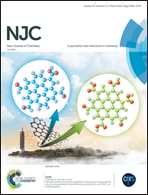Quantitative structure–property relationship modeling for the prediction of hydrophilic drug entrapment in liposomes for lung targeted delivery
Abstract
Targeted delivery to lung tissues plays a vital role in the delivery of drugs to asthma patients since biological barriers such as the trachea, bronchi, bronchioles, and alveoli can often restrict the passage of a drug across them. Various cysteinyl leukotriene receptors such as LTC4, LTD4, and LTE4 present at lung sites (especially in the bronchi) release leukotrienes that contribute to bronchoconstriction, leading to asthma and other lung disorders. Therefore, leukotriene receptor antagonists such as Montelukast sodium (a hydrophilic and potent LTC4 antagonist) are preferred in the treatment of asthma. A database of phospholipids used in liposomal formulations for the hydrophilic drug was screened with the development of a quantitative structure–property relationship (QSPR) model in mind. Furthermore, using partial least squares and principal component analysis methods, the best set of descriptors (SlogP_VSA2, TPSA, vsa_other, PEOE_VSA_PPOS) out of 115 were selected with respect to % drug entrapment. Based on the best descriptors, phosphatidylcholine was selected as an independent variable along with cholesterol for implementation of the factorial design in the preparation of liposomal batches. The optimized batch showed 84% entrapment efficiency, which was further studied by considering critical attributes in a process analytical technique (PAT) study. The optimized batch was lyophilized and showed 76% drug release when tested by dialysis method. The ex vivo drug diffusion across bronchial smooth muscle cells showed 11% diffusion (over 90 min) attributed to the binding of a maximum amount of the drug to the cysteinyl leukotriene receptors. The developed liposomal formulation achieved the desired objective of targeted delivery by application of QSPR and PAT methodologies.



 Please wait while we load your content...
Please wait while we load your content...